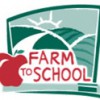
Every year farmers must harvest their crops. This process marks the end of the growing season and carries social significance in communities, but it also creates challenges for producers trying to deliver fresh, high-quality produce to market. Good postharvest practices establish appropriate cold chains that maintain the correct temperatures, humidity, and respiration rates while also ensuring the safety, sanitation,and quality of the fruits. These postharvest practices differ, depending on the size and economic situation of an operation. This eighteen-page fact sheet provides postharvest storage, packaging, and handling recommendations for small farm specialty crop producers. Written by Jonathan Adam Watson, Danielle Treadwell, Steven A. Sargent, Jeffrey K. Brecht, and William Pelletier, and published by the Horticultural Sciences Department.
http://edis.ifas.ufl.edu/hs1270
Tag: Jonathan A. Watson
The Role and Impact of Technology on Supply-Chain Management in the Food Industry
 In competitive markets, innovations such as electronic devices, information technology, and green and sustainable technologies can provide a competitive advantage in managing the supply chain, and determine which operations succeed and which fail. The information in this article is intended to provide insight regarding the potential benefits and limitations of these technologies so that firms in the food industry can make more informed decisions on which technologies should be incorporated into their own systems and to what degree. This 5-page fact sheet was written by Jonathan A. Watson, Allen F. Wysocki, and Ray A. Bucklin, and published by the UF Department of Agricultural and Biological Engineering, April 2015. (UF/IFAS photo: Thomas Wright)
In competitive markets, innovations such as electronic devices, information technology, and green and sustainable technologies can provide a competitive advantage in managing the supply chain, and determine which operations succeed and which fail. The information in this article is intended to provide insight regarding the potential benefits and limitations of these technologies so that firms in the food industry can make more informed decisions on which technologies should be incorporated into their own systems and to what degree. This 5-page fact sheet was written by Jonathan A. Watson, Allen F. Wysocki, and Ray A. Bucklin, and published by the UF Department of Agricultural and Biological Engineering, April 2015. (UF/IFAS photo: Thomas Wright)
http://edis.ifas.ufl.edu/ae511
A Farm to School Procurement Calculator for Specialty Crop Producers and School Food Service Staff
 Florida Farm to School programs are designed to connect producers with schools. But school food service staff make their purchasing decisions in terms of servings and producers pack their products by weight. General calculators and guides designed for national Farm to School programs don’t address Florida’s diverse production of fresh fruits and vegetables. This procurement calculator and guide for Florida Farm to School programs was written by Jonathan A. Watson, Danielle Treadwell, Anna Prizzia, and Kelli Brew, and published by the UF Department of Horticultural Sciences, September 2014.
Florida Farm to School programs are designed to connect producers with schools. But school food service staff make their purchasing decisions in terms of servings and producers pack their products by weight. General calculators and guides designed for national Farm to School programs don’t address Florida’s diverse production of fresh fruits and vegetables. This procurement calculator and guide for Florida Farm to School programs was written by Jonathan A. Watson, Danielle Treadwell, Anna Prizzia, and Kelli Brew, and published by the UF Department of Horticultural Sciences, September 2014.
http://edis.ifas.ufl.edu/hs1250